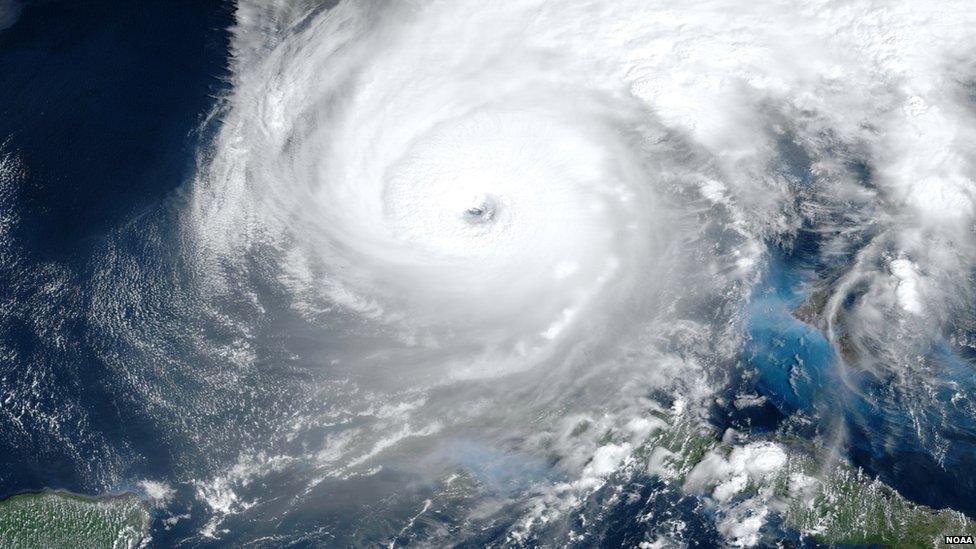Unique Atlantic hurricane season ends
- Published

Satellite image of Category 4 major hurricane Ian in September
In spring 2022, all pre-season forecasts for the Atlantic hurricane season were predicting an increase of tropical storm and hurricane activity for the seventh consecutive year.
The season, which ends on 30 November, has actually finished with 14 named storms, eight hurricanes and two major hurricanes - which is near average.
Matthew Rosencrans, lead hurricane forecaster for the Climate Prediction Center at the National Oceanographic and Atmospheric Administration (NOAA) in the US, said, "The 2022 seasonal activity fell within NOAA's predicted ranges for named storms and hurricanes."
However, the prediction fell short of their pre-season outlooks which suggested an above normal season.
Pre-season forecasts in spring all predicted above average activity
What did we learn from this hurricane season?
In its post analysis, NOAA said that this unique season was defined by a rare mid-season pause in storms.
This pause ultimately affected the total number of named storms and hurricanes forming throughout the season.
However, despite the quieter than expected season, there were still some notable hurricanes, reinforcing the message that no matter how many storms are predicted, it only takes one to destroy communities.
The most powerful and destructive hurricane this year was Ian, which hit Florida at the end of September. It was a Category 4 major hurricane, causing 130 fatalities and over $50 billion in damages.
Hurricane Ian caused destruction in Fort Myers, Florida
Ian tracked right across Florida before curving back and making a second landfall in South Carolina.
The biggest surprise of the 2022 season according to meteorologists at Colorado State University (CSU) was the lack of any storm throughout August - a time when activity in the Atlantic normally starts to increase.
Another unusual feature of this season was the formation of three hurricanes (Lisa, Martin and Nicole) during November, tying with 2001 for the most hurricanes to form in November.
Were the pre-season forecasts wrong?
Predicting some months in advance is always a tricky science. But seasonal forecasting of the Atlantic hurricane season has shown much higher skill in recent decades.
One of the major climatic indicators on how a season might progress is the El Ni帽o Southern Oscillation pattern. If this is in a La Ni帽a phase where the waters in the Pacific are lower than normal, this often leads to a more active hurricane season.
La Ni帽a did indeed persist and we are now in what's known as a "triple-dip" La Ni帽a - that is, the same phase for three consecutive years - so what else was happening?
While the tropical Atlantic Sea surface temperatures were above average, those in the sub-tropics were anomalously low during July according to CSU. This may have led to increases in vertical wind shear - wind speeds increasing and changing direction within the atmosphere.
Wind shear will kill off any development of a storm and this is the primary reason why tropical activity was reduced, particularly throughout August.
In its post season analysis, NOAA said scientists preliminarily believe the rare mid-season pause in storms was caused by increased wind shear and supressed atmospheric moisture high over the Atlantic.
How about the 2023 season?
While it's far too early to give any detail on how the hurricane season in 2023 will develop, many of the forecasts are based on longer-term climatic patterns so there are already some pointers.
We know La Ni帽a tends to increase tropical storm activity so with the ongoing triple-dip, unless anything drastically changes, this would suggest next season is likely to be an active one in the Atlantic.